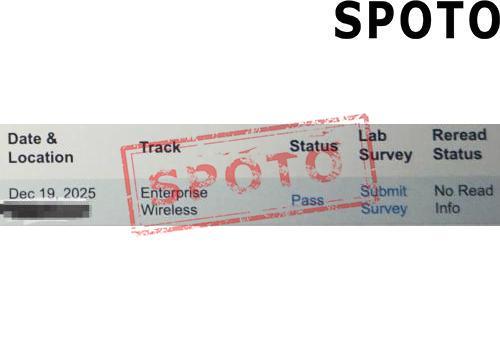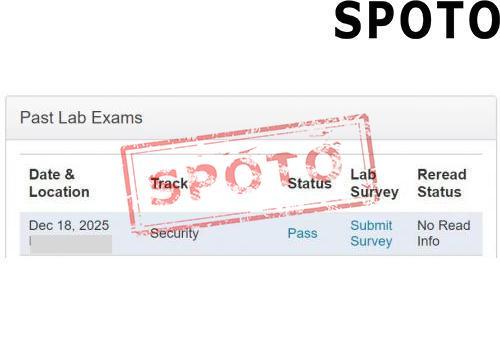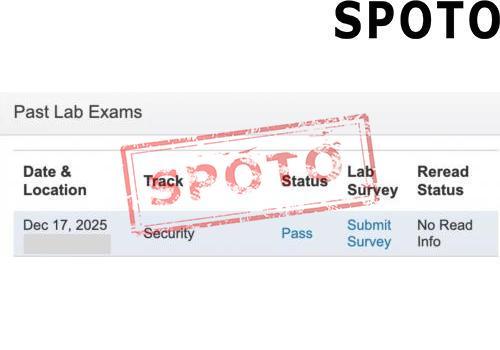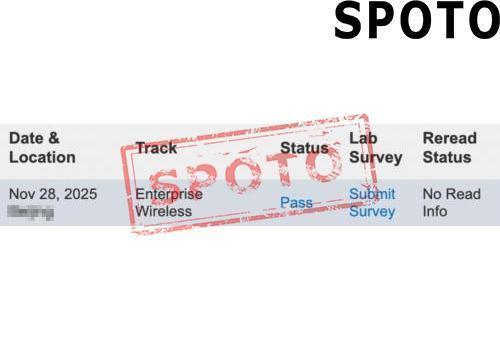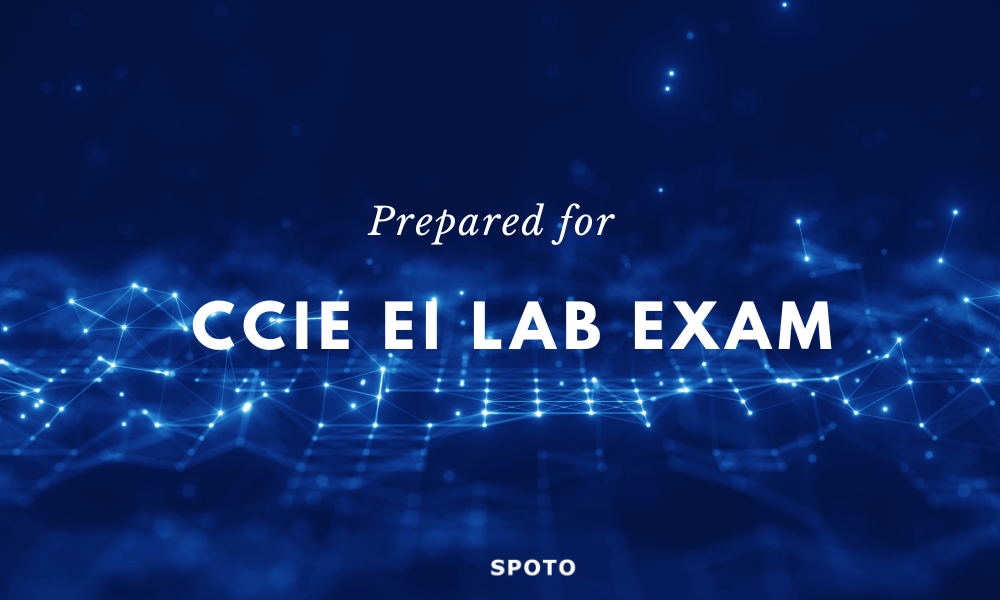
In the dynamic landscape of modern networking, the demand for skilled professionals with advanced certifications has risen significantly. As one of the most prestigious credentials in the industry, the Cisco Certified Internetwork Expert (CCIE) has become a coveted milestone for many networking professionals. The CCIE Enterprise Infrastructure (EI) v1.1 certification raises the bar, requiring network engineers to demonstrate proficiency in the latest enterprise network technologies and architectures.
The Switched Campus is a crucial component within the CCIE EI v1.1 learning path, as it encompasses the core concepts and advanced techniques essential for designing and implementing efficient, scalable, and secure campus networks. By mastering the Switched Campus curriculum, network engineers can equip themselves with the knowledge and skills necessary to build robust enterprise network infrastructures.
This blog will provide a comprehensive overview of the Switched Campus section of the CCIE EI v1.1 learning matrix. We will delve into the fundamental concepts and gradually explore the more complex aspects of network design and configuration. Whether you are preparing for the CCIE EI v1.1 exam or a seasoned network engineer seeking to enhance your expertise in campus networking, this blog will offer valuable insights and guidance.
Switched Campus
Switch Administration
The foundation of any robust switched campus network lies in the effective administration of network switches. As aspiring CCIE Enterprise Infrastructure (EI) professionals, mastering the following key aspects of switched campus administration is crucial:
- Managing the MAC Address Table: Understanding how switches learn and maintain MAC addresses is essential for efficient data forwarding. Gain proficiency in managing the MAC address table, including techniques for dynamically and statically configuring MAC address entries.
- Errdisable Recovery: The errdisable feature helps automatically recover from certain error conditions that can disable switch ports. Familiarize yourself with the errdisable functionality and how to effectively implement recovery mechanisms.
- Layer 2 MTU Configuration: The Maximum Transmission Unit (MTU) setting at Layer 2 ensures that frames are appropriately sized for the network. Ensure that the L2 MTU is properly configured to prevent fragmentation and optimize network performance.
Layer 2 Protocols
Layer 2 protocols are vital for device discovery and maintaining link integrity within the switched campus environment. Understand the following protocols and their use cases:
- Cisco Discovery Protocol (CDP) and Link Layer Discovery Protocol (LLDP): These protocols enable devices to share information about their capabilities and status, facilitating network discovery and troubleshooting.
- Unidirectional Link Detection (UDLD): UDLD helps identify and handle unidirectional links, which can lead to connectivity issues if not properly addressed.
VLAN Technologies
VLANs (Virtual Local Area Networks) are a cornerstone of modern networking, allowing for logical segmentation of the campus network. Familiarize yourself with the following VLAN-related concepts and configurations:
- Access Ports and Trunk Ports (802.1Q): Differentiate between ports that allow traffic from a single VLAN and those that carry traffic for multiple VLANs, ensuring seamless VLAN implementation.
- 802.1Q VLAN Tagging: This standard enables the tagging of frames with VLAN information, allowing multiple VLANs to be carried over a single link.
- Native VLAN: Understand the role of the native VLAN, which is the default VLAN used when frames are untagged.
- Manual VLAN Pruning: Learn the process of selectively pruning VLANs from certain ports to optimize network traffic and reduce unnecessary overhead.
- Normal and Extended Range VLANs: Distinguish between the different VLAN ID ranges and their respective applications.
- Voice VLAN: Implement and configure a dedicated VLAN for voice traffic to ensure quality of service and optimal performance.
EtherChannel
EtherChannel technology is a fundamental concept in switched campus networks, as it enables the aggregation of multiple physical links into a single logical channel. As an aspiring CCIE Enterprise Infrastructure (EI) professional, it is crucial to have a deep understanding of the following EtherChannel-related topics:
- LACP and Static EtherChannel Configuration: Explore the benefits and configurations of both dynamic Link Aggregation Control Protocol (LACP) and static EtherChannel. Understand the use cases and trade-offs of each approach.
- Layer 2 and Layer 3 EtherChannel: Understand the ability to aggregate links at different OSI layers, including the differences and applications of Layer 2 and Layer 3 EtherChannel.
- Load Balancing Across EtherChannel: Ensure that traffic is evenly distributed across the aggregated links by familiarizing yourself with the various load-balancing algorithms and their impact on EtherChannel performance.
- EtherChannel Misconfiguration Guard: Leverage the EtherChannel Misconfiguration Guard feature to detect and prevent improper EtherChannel configurations, which can lead to connectivity issues.
- Multi-chassis EtherChannel: Identify the use cases and implementation considerations for spanning EtherChannels across multiple devices, also known as multi-chassis EtherChannel.
Spanning-Tree Protocol
Spanning Tree Protocol (STP) is vital for preventing loops in a switched network. Gain proficiency in the following STP-related concepts and configurations:
- PVST+, Rapid PVST+, and MST: Understand the different Spanning-Tree Protocol implementations, their advantages, and the trade-offs between performance and scalability.
- STP Tuning: Learn how to optimize Spanning-Tree Protocol by adjusting parameters such as switch priority, port priority, and port path cost to ensure optimal network behavior.
- PortFast, BPDU Guard, and BPDU Filter: Implement these features to speed up network convergence and enhance STP security by protecting against BPDU manipulation.
- Loop Guard and Root Guard: Leverage these mechanisms to mitigate STP-related issues and maintain a healthy network topology.
Routing Concepts
Understanding routing is essential for network design and operation. Key concepts include:\[Administrative Distance\]: The preference given to routes learned by different routing protocols.
- Static Routing: Routes manually configured by a network administrator.
- Policy-Based Routing: Routing decisions based on attributes other than the destination address.
- VRF-Lite and VRF-Aware Routing: Techniques for segregating routing information within a network.
- Route Leaking and Filtering: Methods to control the flow of routing information between different routing domains.
- Redistribution: The process of translating routes from one protocol to another.
- Routing Protocol Authentication: Ensuring the security and integrity of routing information.
- Bidirectional Forwarding Detection (BFD): A protocol to quickly detect failures in a path.
- L3 MTU: The MTU setting at the network layer to ensure proper packet sizing.
EIGRP
EIGRP (Enhanced Interior Gateway Routing Protocol) is a widely used routing protocol in computer networking. It offers a range of features and capabilities that make it a popular choice for network administrators. In this blog, we will explore the key aspects of EIGRP, including adjacencies, best path selection, operations, EIGRP named mode, optimization, convergence, and scalability.
Adjacencies
EIGRP forms adjacencies with neighboring routers to exchange routing information. This process helps in building a topology table and maintaining up-to-date routing information.
Best Path Selection
EIGRP uses various parameters for best path selection, including reported distance, computed distance, feasible distance, feasibility condition, successor, and feasible successor. Understanding these parameters is crucial for efficient routing decisions.
Classic Metrics and Wide Metrics: EIGRP supports both classic metrics (bandwidth and delay) and wide metrics (reliability, load, and MTU). This flexibility allows for more granular control over routing decisions.
EIGRP performs general operations such as maintaining a topology table, handling different packet types, addressing issues like "stuck in active," and enabling graceful shutdown when necessary.
EIGRP Named Mode
The named mode in EIGRP introduces a more simplified configuration and enhanced functionality, making it easier to manage and troubleshoot EIGRP implementations.
Optimization, Convergence, and Scalability
EIGRP offers optimization features to improve routing efficiency, convergence mechanisms to minimize routing table recalculation time, and scalability options to support large and complex networks.
Query Propagation Boundaries: Understanding query propagation boundaries is important for controlling the scope of route queries in EIGRP networks, preventing unnecessary traffic and potential routing loops.
Leak-Map with Summary Routes: EIGRP supports the use of leak-maps to selectively advertise summary routes into specific network areas, providing more control over route advertisement and network segmentation.
EIGRP Stub with Leak Map: The EIGRP stub feature, combined with leak maps, allows for the controlled propagation of routing information to stub routers in the network, enhancing security and reducing unnecessary traffic.
OSPF (v2 and v3)
OSPF (Open Shortest Path First) serves as a sophisticated link-state routing protocol renowned for its robust functionality and versatility. This protocol encompasses the following essential components:
Adjacencies and OSPFv3 Support
Involves the establishment of crucial relationships between routers and the seamless integration of IPv6 support in OSPFv3, ensuring efficient communication and network stability.
Network and Area Types
Encompasses the intricate differentiation of various OSPF network and area configurations, tailored to meet specific network requirements and optimize routing efficiency.
Path Preference
Refers to the meticulous criteria utilized by OSPF to prioritize one path over another, facilitating optimal routing decisions and enhancing network performance.
OSPF Operations
Encompasses a wide array of general operations and sophisticated mechanisms designed to uphold the stability and reliability of OSPF networks, ensuring seamless operation and data transmission.
Optimization and Convergence
Focuses on implementing strategic strategies to optimize OSPF performance and convergence, enhancing network efficiency and minimizing routing delays for enhanced operational efficiency.
BGP
BGP (Border Gateway Protocol) stands as the predominant routing protocol for the Internet, renowned for its pivotal role in facilitating global network connectivity. This protocol encompasses a myriad of essential components:
IBGP and EBGP Peer Relations
Detailing the intricate relationships between routers within an AS (Autonomous System) and those beyond its boundaries, crucial for seamless data exchange and network stability.
Path Selection
Explores the sophisticated mechanisms through which BGP meticulously selects the optimal path to a destination, ensuring efficient data transmission and network performance.
Routing Policies
Involves the strategic application of policies to govern route distribution and manipulation, enabling network administrators to exert control over data flow and optimize routing decisions.
AS Path Manipulations
Delve into the diverse techniques employed to modify the AS path for various purposes, enhancing routing flexibility and enabling customized routing configurations.
Convergence and Scalability
Highlights essential features such as route reflectors and aggregation, instrumental in enhancing BGP performance, promoting network scalability, and ensuring rapid convergence of routing information.
Other BGP Features
Explores additional capabilities like soft reconfiguration and route refresh, offering network administrators advanced tools to streamline configuration management and optimize routing efficiency.
Multicast
Multicast plays a pivotal role in enabling the efficient dissemination of data to multiple recipients across networks. This essential networking concept encompasses the following key components:
Layer 2 Multicast
nvolves protocols such as IGMP (Internet Group Management Protocol) and MLD (Multicast Listener Discovery) designed to manage multicast traffic at Layer 2, ensuring seamless communication and data distribution within multicast groups.
Reverse Path Forwarding Check
Implements a crucial mechanism to prevent the unnecessary propagation of multicast traffic, enhancing network efficiency and minimizing bandwidth consumption by verifying the validity of incoming multicast packets.
PIM (Protocol Independent Multicast)
Encompasses Protocol Independent Multicast, a versatile protocol that operates seamlessly over both IPv4 and IPv6 networks. It offers a range of modes and features tailored to facilitate efficient multicast routing and delivery across diverse network environments.
Conclusion
Through an in-depth dive into the CCIE EI v1.1 Switched Campus learning matrix, we not only review the basics of campus network design and implementation, but also provide an in-depth analysis of advanced concepts and best practices in network engineering. From VLAN assignment to STP configuration, QoS implementation to network security maintenance, every link is an indispensable part of building an efficient, stable, and secure campus network.
As technology continues to advance, so does the role of the network engineer. The CCIE EI v1.1 certification represents not only a certification of professional skills, but also a commitment to the continuous learning and adaptation of individuals to new technological challenges. We hope this blog will serve as a useful resource on your learning journey to help you take the next step in preparing for the CCIE EI v1.1 exam or improving your professional skills.
The online world is complex and dynamic, and every day is full of new challenges and opportunities. As network engineers, we have a responsibility to keep learning and improving to ensure that we can meet these challenges and seize opportunities. Whether you're just starting your career as a network engineer or have been in the field for years, the CCIE EI v1.1 Switched Campus learning matrix is an invaluable resource to help you stay at the forefront of the industry.
Finally, we encourage all readers to continue to explore, keep practicing, and apply what they have learned to their real work. Remember, learning is a never-ending process, and each exploration and practice will bring you closer to becoming a true networking expert. Let's work together to advance the development of network technology and contribute to building a more connected and intelligent world.
